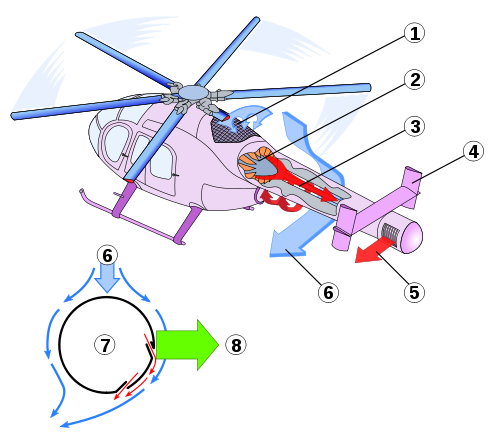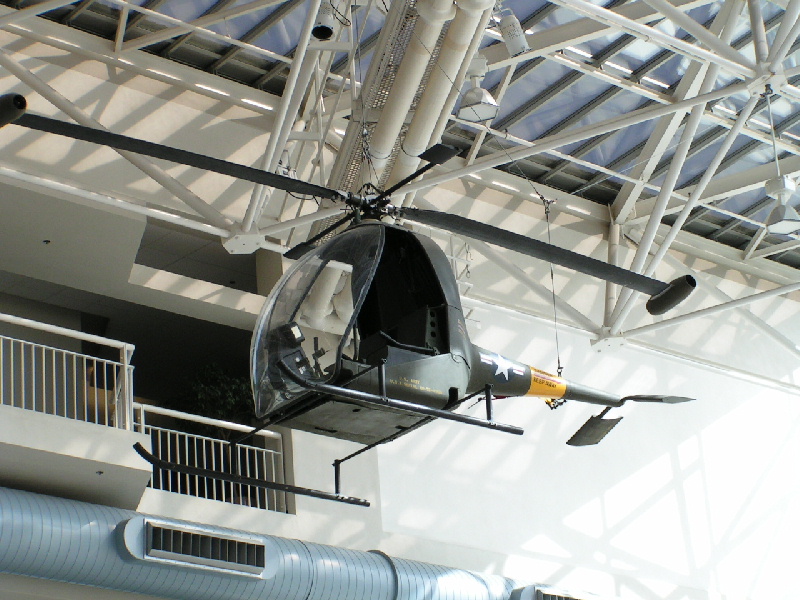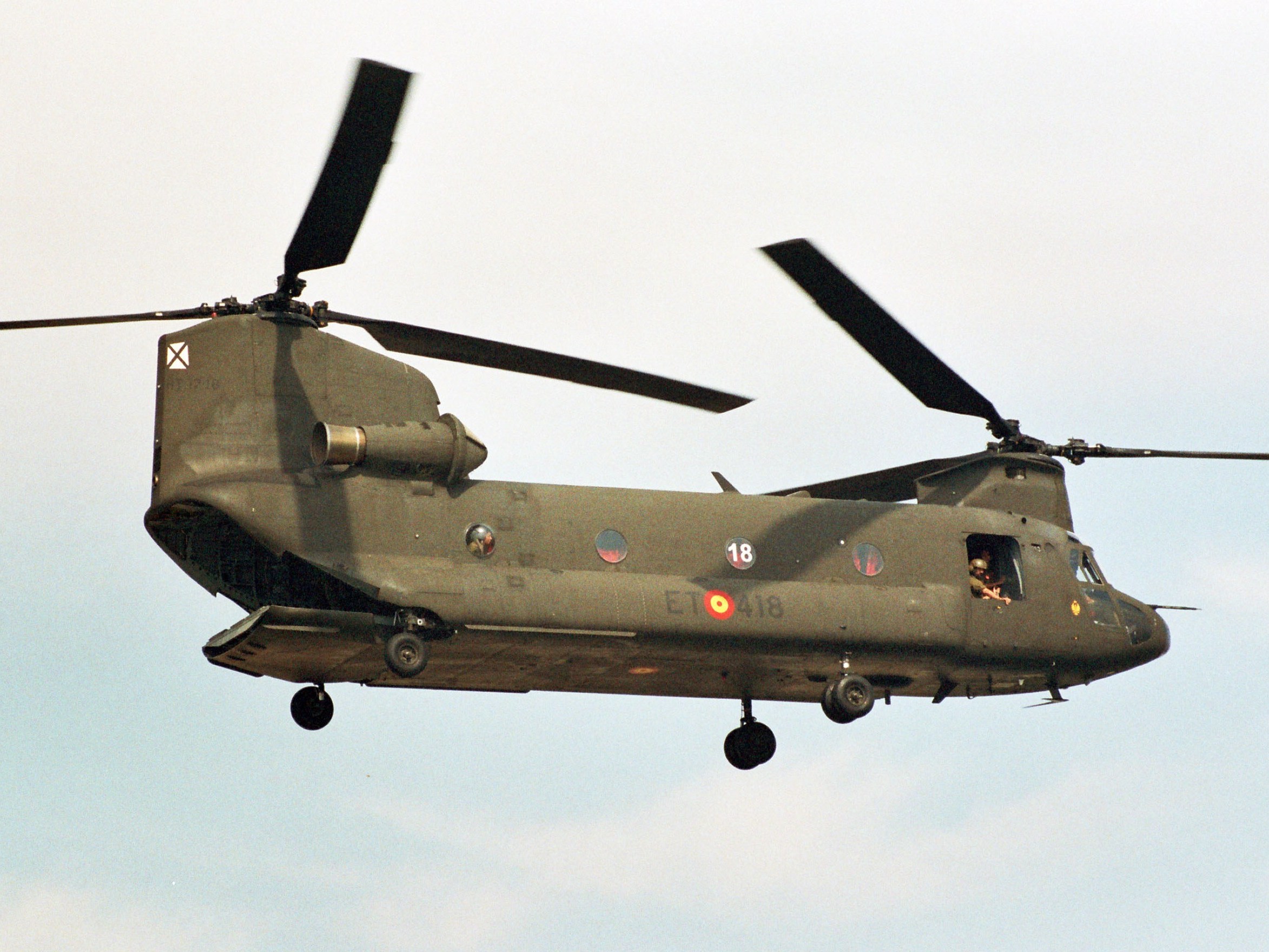NOTAR, "no tail rotor", is a system which utilizes the Coanda effect to redirect the air coming from the main rotor to the side, and thus counters the torque caused by the main rotor. Inside the tail boom is a fan which blows a high volume of air down the boom. The air exits the tail boom through slots on the side of the boom. This small air flow attracts and redirects the main air flow from the rotor, which in turn counters the rotor torque.
Normally, a rotor is driven by the mast, however the tip jet system makes the rotor blades turn using nozzles on the tips of the blades. The tips eject a gas in one direction and the blades move in the opposite direction. These two forces are action and reaction, and because of this, no torque is generated on the fuselage.
Another group of helicopters use several counterrotating main rotors, and because the rotors spin in opposite directions, no net torque is generated on the helicopter. Variations include coaxial rotors, tandem rotors, and intermeshing rotors.
Coaxial rotors
Tandem rotors
Intermeshing rotors
Sources:
http://en.wikipedia.org/wiki/Helicopter_rotor
http://en.wikipedia.org/wiki/NOTAR
http://en.wikipedia.org/wiki/Tip_jet
http://en.wikipedia.org/wiki/Tandem_rotors
http://en.wikipedia.org/wiki/Coaxial_rotors
http://en.wikipedia.org/wiki/Intermeshing_rotors




0 comments:
Post a Comment